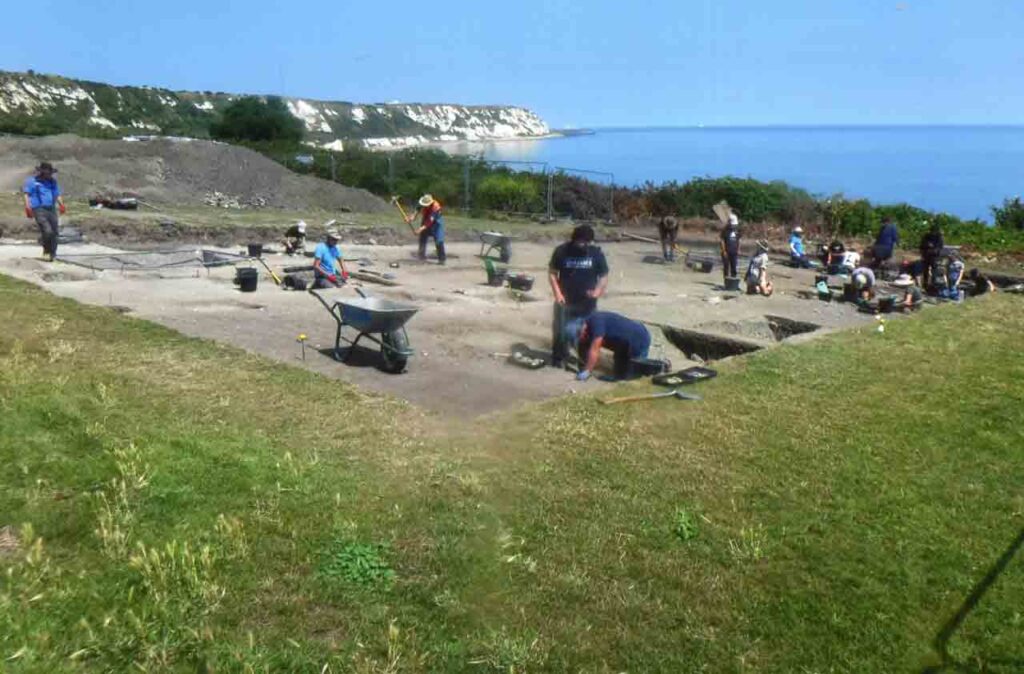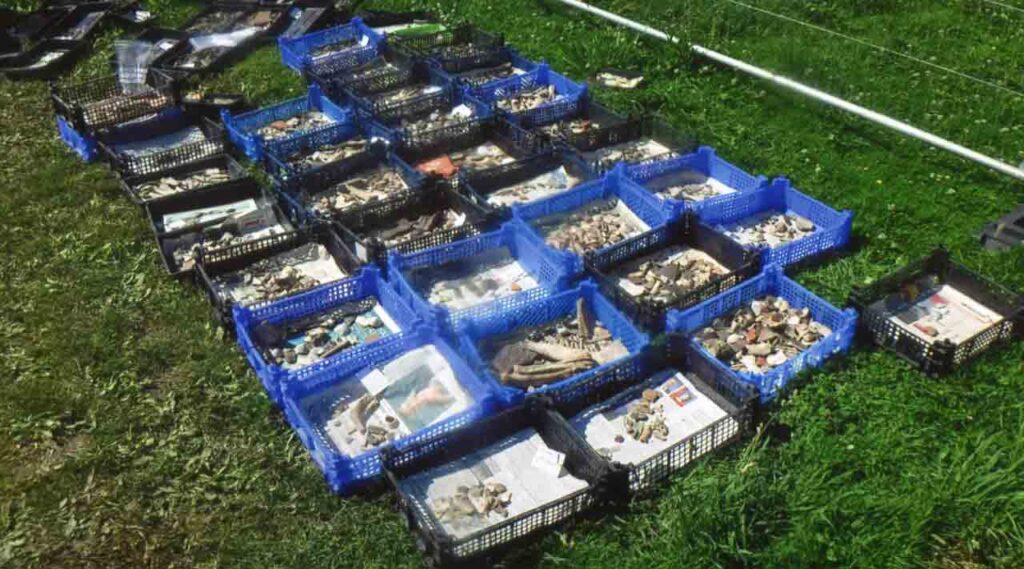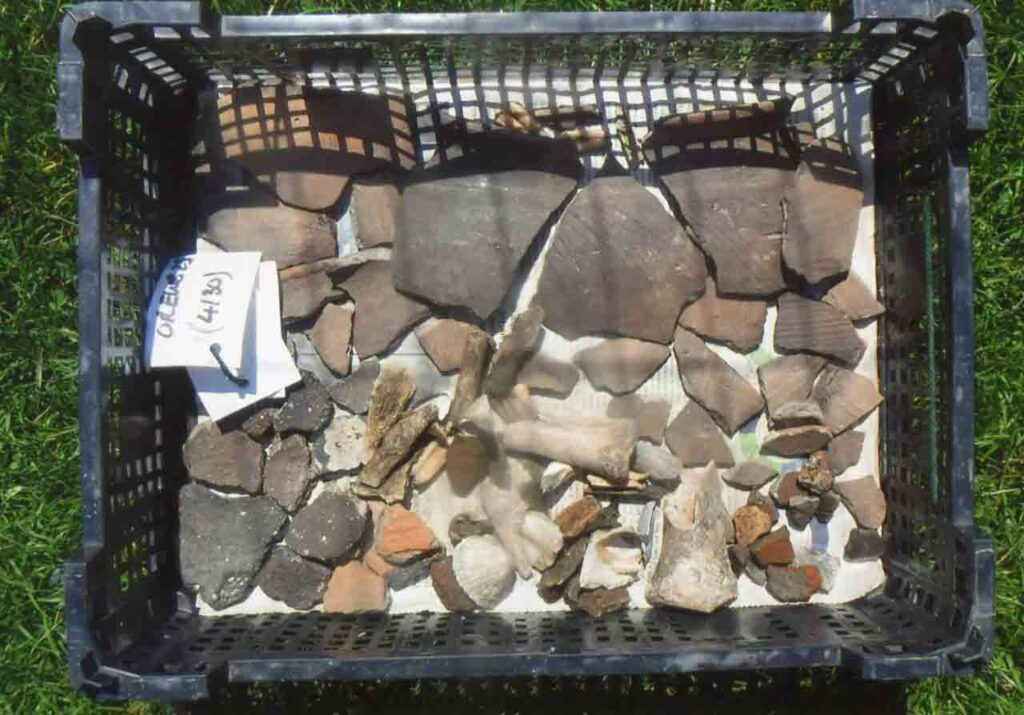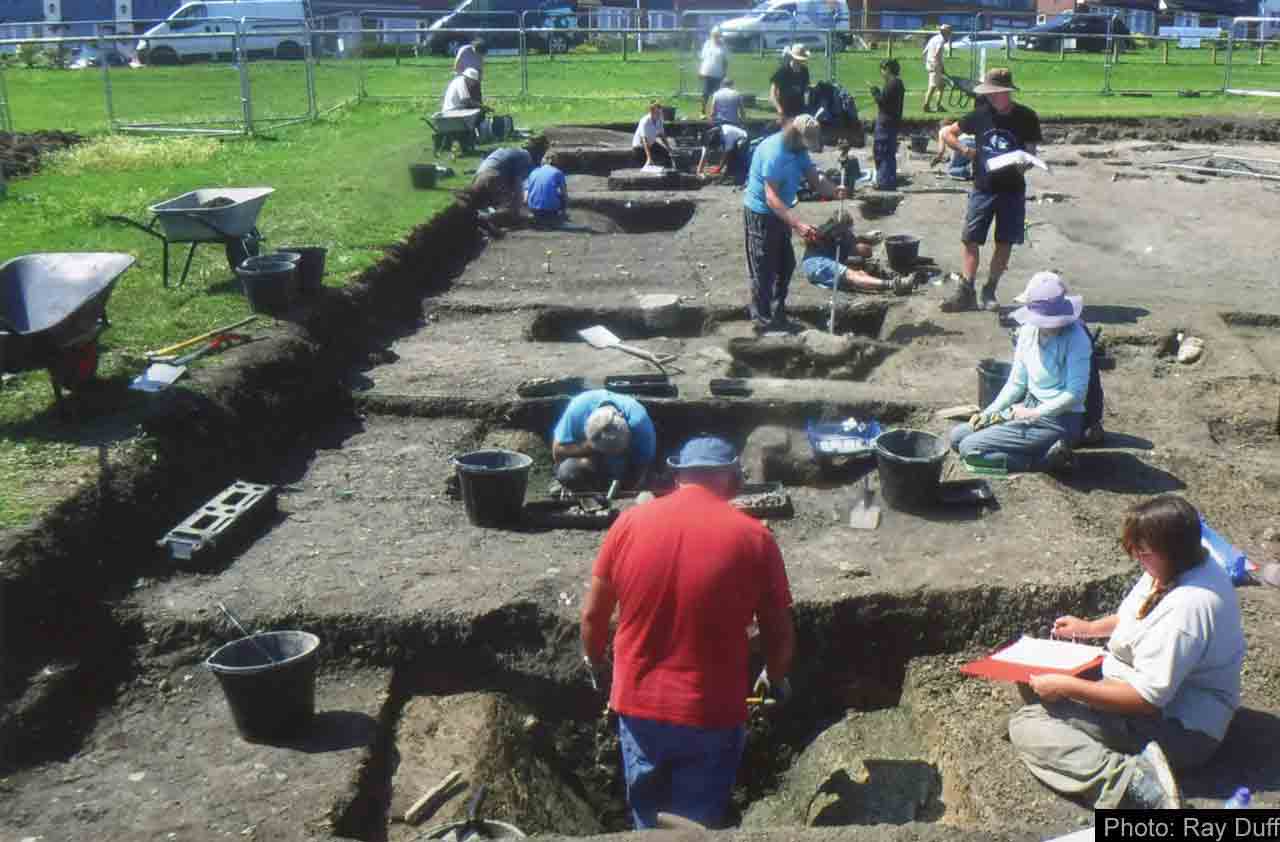All hands required to ensure the site is fully excavated Photo and Words – Ray Duff
Folkestone’s stunning East Cliff has once again yielded incredible insights into ancient life, as the latest archaeological dig wraps up with another season of groundbreaking discoveries. Experts are hailing the finds as a significant addition to the extensive data collected since excavations began in 2010.
Against a breathtaking backdrop of the Channel, with views stretching to France and ships gliding by, the dedicated teams from Canterbury Archaeology Trust, Folkestone Research and Archaeology Group (FRAG), and Dover Archaeology Group (DAG), alongside enthusiastic volunteers and students from across the globe (including the UK, Ukraine, and the USA), have been hard at work.

Site activities beneath the cliffs Photo: Ray Duff
This year’s focus completed a multi-year sequence of excavations, fully uncovering a large section of a late Iron Age settlement. Provisional findings reveal a complex network of deep ditches crisscrossing the site, along with numerous pits, all likely dating from around 100 BC to 50-100 AD, reaching into the early Roman period. These features provide further evidence of early field systems and suggest a significant Iron Age presence.

Finds galore mounted regularly during the dig. Photo: Ray Duff
One particularly deep ditch appears to be an enclosure, likely surrounding a key part of the Iron Age settlement. This reinforces what we already know about the East Wear Bay area, including the ground beneath the later Roman Villa, as a long-standing hub of Iron Age activity. The discovery of quernstones, used for grinding corn locally and even exported across Britain, points to a thriving community. Furthermore, a basic port area on the foreshore facilitated the movement of people and goods across the coasts and even the Channel, dating back to the Bronze Age.

A selection of animal bone, shells and Iron Age pottery Photo: Ray Duff
Among this year’s unearthed treasures are an array of domestic pottery, some beautifully decorated with intricate designs alongside more basic cross-hatching, and a probable chalk loom-weight. The team also found typical animal remains, predominantly boar, cattle, and sheep, offering clues about ancient diets. Intriguingly, several well-preserved flint tools, including some surprisingly sharp blades, were also recovered. Roman artifacts, such as fine plain Samian ware, roof tile fragments from the nearby Villa, and other pottery pieces, further highlight the site’s enduring significance.

Troweling down into a late Iron Age ditch for the finds. Photo: Ray Duff
While the two-stage Roman Villa was not accessible this year, there’s hope for its future opening, pending additional funding. The dig wasn’t just for the archaeologists, though! Locals and visitors alike were welcomed to observe the work from the fencing throughout the excavation. The grand finale was a hugely successful public open day, where people of all ages enjoyed site tours, got up close with the finds, and participated in engaging activities. The timing also perfectly coincided with the start of the Triennial Art Show, drawing even more visitors to witness both ancient history and contemporary art in one spectacular location.
Further Info:
East Wear Bay project: – https://www.canterburytrust.co.uk/east-wear-bay
Canterbury Archaeology Trust : www.canterburytrust.co.uk
Folkestone Research and Archaeology Group: https://www.facebook.com/FolkestoneResearchAndArchaeologyGroup
